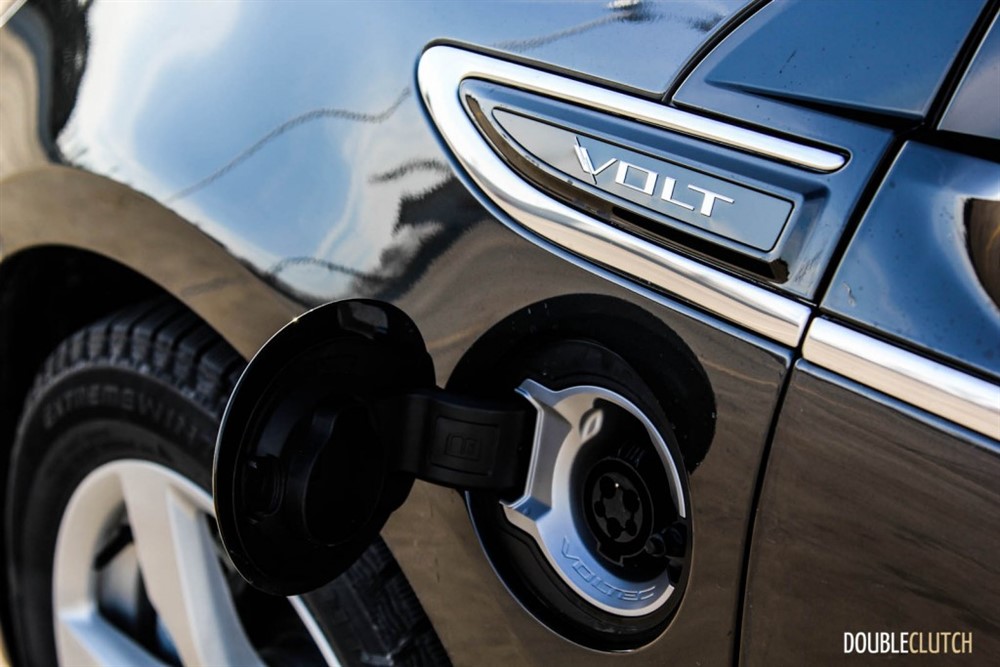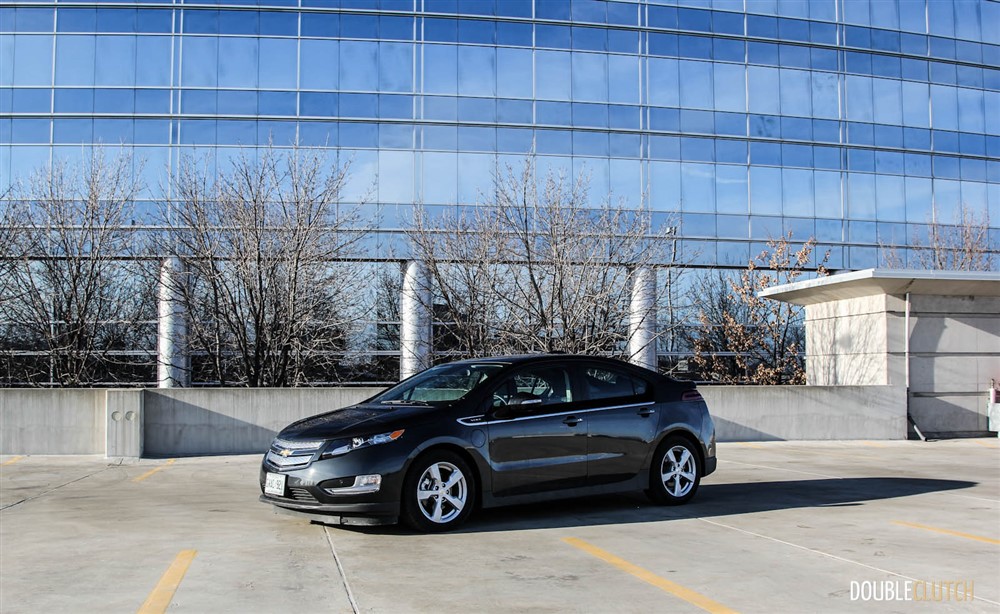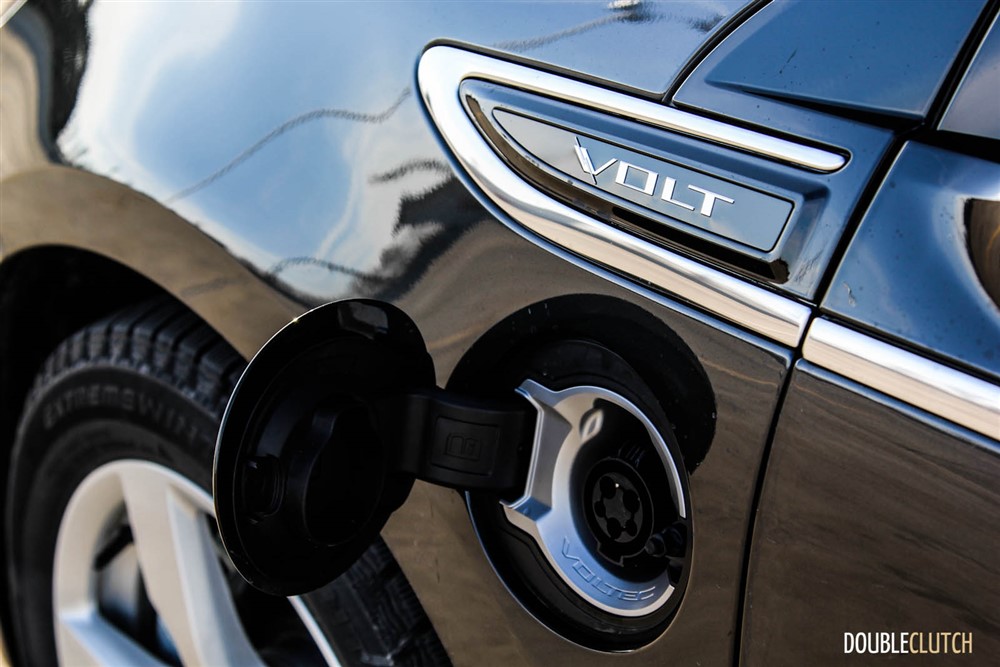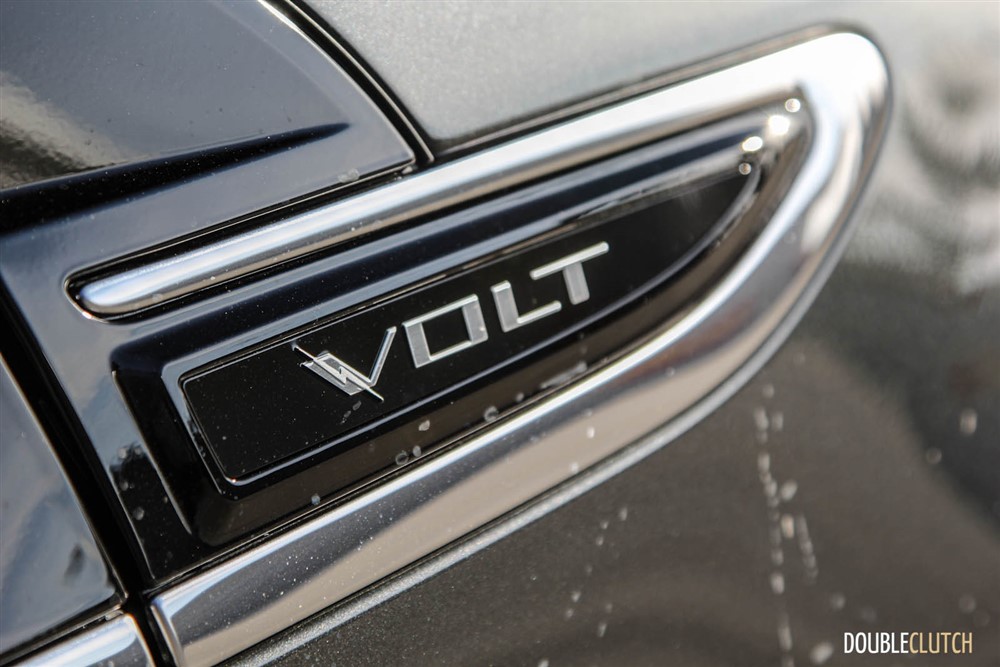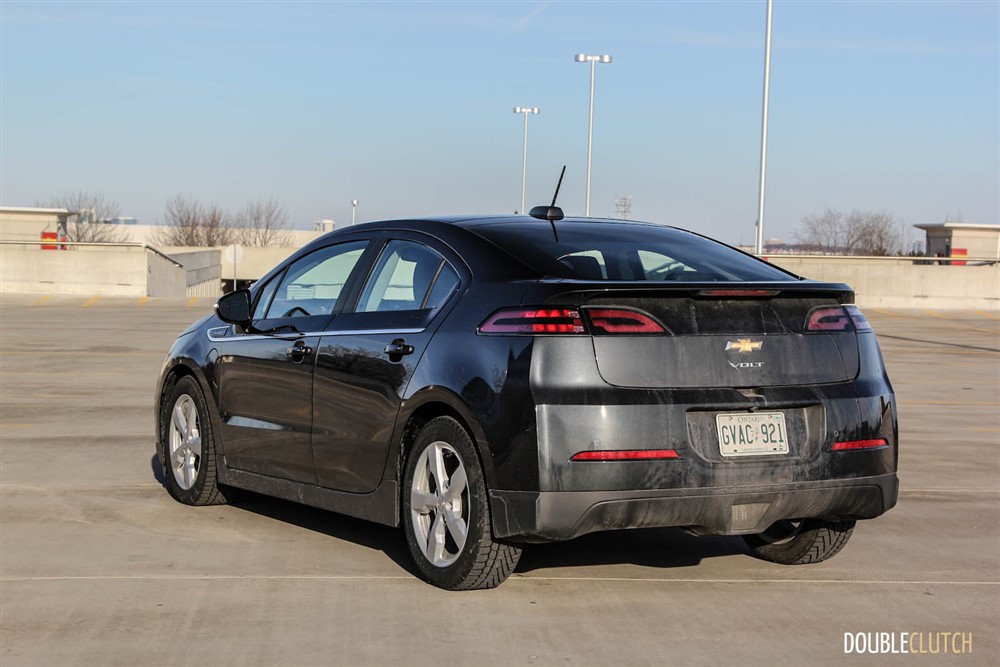This winter has been a particularly interesting one. We’ve had some high-end sports cars, affordable hot coupes, and of course, the usual plethora of green vehicles in our garage for review purposes. What we’ve noticed in the past is that hybrid and plug-in electric vehicles work optimally with regards to overall range and driving dynamics in warmer weather, and that winter temperatures take a serious toll on these factors. In the past, we’ve driven a couple examples of Chevrolet’s electric offering, but it’s been in the warm months. I was given the keys to a 2015 Chevrolet Volt for a weeklong test, and I was happy to finally play with one myself.
The Volt has a little bit of controversy around it. A ton of people have written it off by calling it a hybrid, which it really isn’t. Others are disappointed that it’s not “fully electric” because it has an actual gas tank. Let’s straighten this out before getting further into this review; this Chevrolet is a “series hybrid”, which means the car is driven solely by the electric motor. The gasoline engine under the hood serves as a generator to extend range should you have to drive it longer than the electric range will allow. On a full charge, I was able to muster 63km out of the Volt, which isn’t bad at all. Statistics say that the average Canadian drives 40km round trip for work on a daily basis. Based on this, the typical urban buyer should be able to use the Volt without ever having to dip into the range extender system.
Power from the Volt is 149 horsepower and 273 lb-ft of torque. Being an electric vehicle, the torque is available instantly, and makes the car feel considerably peppier than it is and an absolute blast when darting around the city. The 1.4L gasoline engine used as a generator is from the same series as seen in other GM offerings such as the Cruze (minus the turbocharger), and offers 83 lb-ft of torque. The 10.5:1 compression ratio of the engine means if you choose to do a ton of highway driving, you will inevitably dip into the gasoline side of the car, and it requires premium fuel.
Pushing down on the accelerator of this fun little Chev will result in a surge of torque, and the car takes off effortlessly. The throttle is sharp, a bit jumpy at parking lot speeds, and it’s not difficult to start driving the Volt in the efficient way it encourages you to. In the digital instrument cluster (more about that later) there’s a gauge that shows you how to keep it green. There’s a little ball that shoots upward when you accelerate hard, and shoots down when you brake hard. Keeping the ball in the center of the gauge means you’re operating the Volt in the greenest way possible, and the car also tells you during your drive what “percentage” you’ve achieved.
There are a few advantages to the Volt over the likes of full electric vehicles like the Nissan Leaf or the Ford Focus BEV. The biggest one is the elimination of range anxiety. We took this particular Volt on a little road trip from Toronto to Niagara Falls and back, and unlike any of the others, the car was actually able to make the round trip without thinking twice. There’s an app for iPhone and Android called “PlugShare”, on which EV owners and operators list charging stations on a map setup. This makes it incredibly easy to find the charging station nearest you. On our trip to Niagara, we started on a full battery charge as well as a full tank of gas. Because the Chevrolet isn’t exactly a highway car, the battery ran out after 50km, and the generator kicked in (averaging 5.8L/100km) thereafter. Upon arriving in Niagara Falls, we found a charging station at our hotel, and juiced it up there, giving us enough electric range to drive around the town as required, and then some more for a part of the drive back home.
The Volt isn’t advertised as a luxury car, nor should it be perceived as one, but it’s definitely a more premium option than the Leaf or the Focus. This isn’t necessarily thanks to any special toys or high-end luxury features, but moreso the atmosphere within the car itself. The interior seats four, and the rear seats are buckets separated by a nice console and cupholders. Upholstery is leatherette, and the front seats are also heated. The center stack is a series of touch buttons that control a special version of the Chevrolet MyLink infotainment system. The touchscreen itself works decently well, and I already like it a lot more than Cadillac’s CUE. However, the touch buttons for other controls can prove difficult while driving as they require you to pull your eyes off the road in order to identify which button you’re pushing. Thankfully, things like the four-way flashers, the door locks, and driving modes are controlled via physical buttons.
Two things about the Volt did bother me, and they’re both factors related to the overall green-ness of the car. The first is the headlights; they’re projector halogens and I can only assume that they’re energy efficient. However, the lights aren’t bright enough at all, and the beam is narrow. Secondly, there’s a flexible lip below the front bumper for aerodynamics. The problem is, it’s a bit too low and would scrape on surfaces. Luckily, it is flexible and won’t break as easily. Full electric cars like the Nissan Leaf or Tesla Model S are able to double the range of the electric-only motor, because they have enough room inside for these components without having to keep room for a gasoline motor.
Personally, I like the idea of the Volt because even though I might be behind on the times, range anxiety is a thing that still affects me. I like being able to jump into my car whenever I want and go as far as I’d like. Granted, research has also shown that buyers of full EVs usually have a second or third car for the purpose of longer trips. Thanks to the elephant in the room known as “range anxiety”, vehicles like the Chevrolet Volt remain more appealing contenders as green cars for those that aren’t quite sold on the full EV lifestyle. Another available option with a range extending motor is the BMW i3, which, despite its slightly goofy looks, is a true competitor to the Volt. I really did like the Chevrolet during our time with it, and it’s hard to believe that it’s been out long enough that the second-generation model goes on sale in the coming months. I have no doubt that the new one will be even better, but it does have some seriously big shoes to fill.



